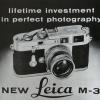100 years Null-Serie
-
Recently Browsing 0 members
- No registered users viewing this page.
-
Similar Content
-
- 4 replies
- 477 views
-
- 8 replies
- 354 views
-
- 4 replies
- 354 views
-
- 4 replies
- 382 views
-
- 598 replies
- 55,440 views
-


.thumb.jpg.a8c0eceb5c93f775e75e8b4465e4cf9c.jpg)


Recommended Posts
Join the conversation
You can post now and register later. If you have an account, sign in now to post with your account.
Note: Your post will require moderator approval before it will be visible.